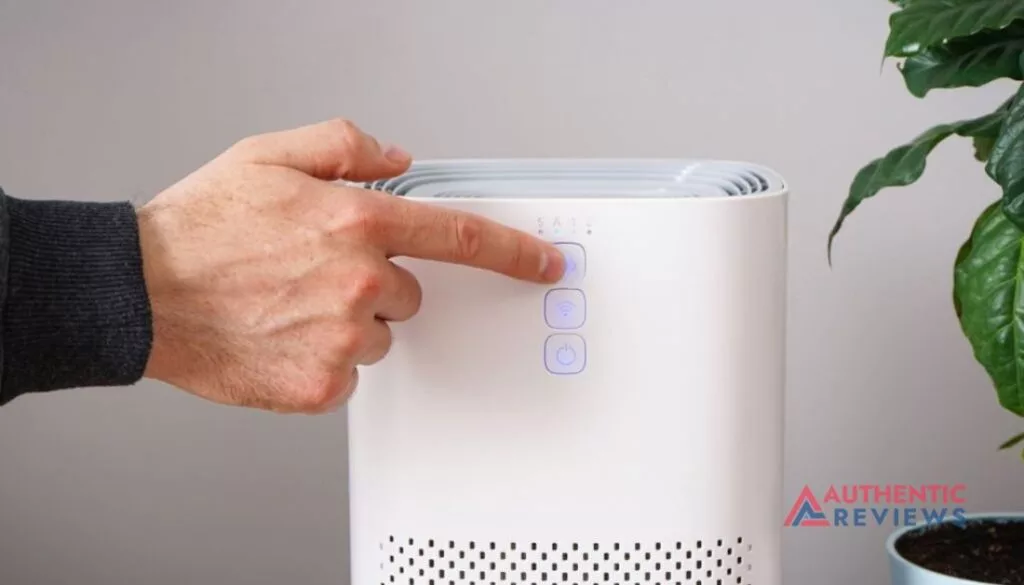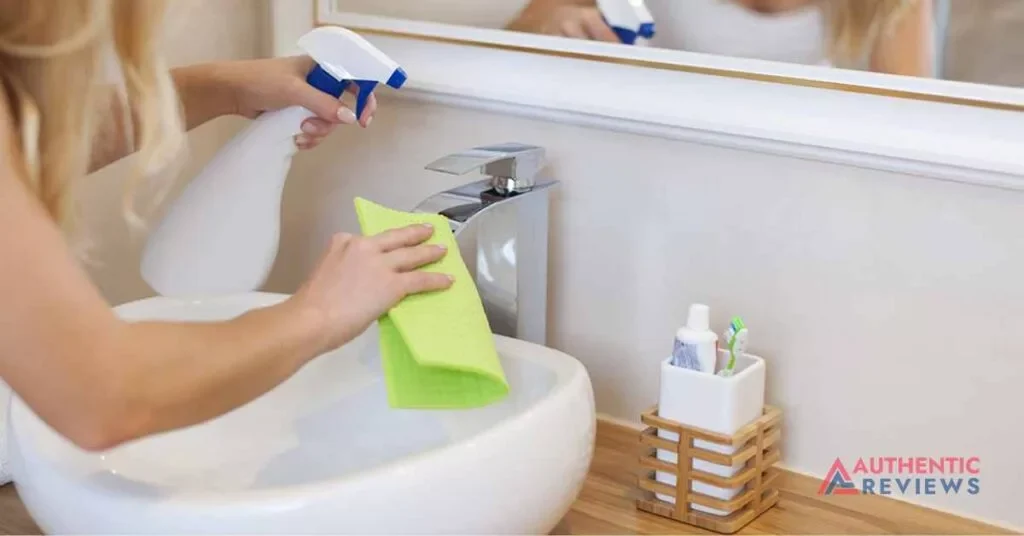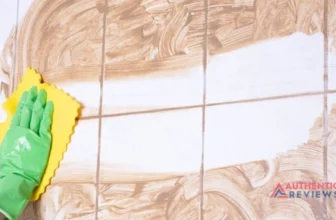How To Dehumidify A Bathroom? – From Steamy to Serene

If you’ve ever noticed that certain weather conditions affect how sticky and uncomfortable your home can feel, you have experienced humidity. Humidity is an invisible but very noticeable factor in the comfort level we all experience, making it important to understand. Dehumidification is a process of taking out excess moisture from the air as a way of reducing odors and improving air quality.
Do you dread entering your bathroom on a hot and humid day? Is the mold growing along the corners driving you mad? If you’ve ever entered your bathroom and felt like you were walking into a sauna room, then you know what it’s like to deal with humid air.
But no need to worry – Banishing bathroom humidity is easier than you think. Applying some tried-and-true tricks of the trade, you’ll soon be able to dehumidify that bathroom in no time. Read on to learn the best strategies for keeping your bathroom cool and dry.

Step-by-Step Guide on How to Dehumidify a Bathroom
Don’t stress if you’re experiencing dampness in your bathroom. This is a common issue, but there are easy methods to remove the humidity and restore your space. With a few steps, you can be on the way to a comfortable, moisture-free environment with a few steps.
From buying the right tools for the job to maintaining your bath sponges and laundry, we’ve got everything you need to know about how to dehumidify your bathroom in our step-by-step guide. What are you waiting for? Follow this guide today to create the natural ways to dehumidify a room.
Step 1: Determine the Level of Humidity:
The first step in dehumidifying a bathroom is to determine the level of moisture and humidity present. The easiest way to do this is with a hygrometer, which measures the relative humidity in the air. If it is over 60%, then dehumidification is necessary.

Step 2: Install an Exhaust Fan:
Installing an exhaust fan in the bathroom can help reduce moisture levels significantly. The fan should be vented to the outside and run whenever possible, as it will draw out hot moist air that builds up inside and exhausts it to the outdoors.
Step 3: Open Windows When Weather Permits It:
Opening windows periodically during dry weather can also go a long way toward reducing indoor moisture levels quickly and naturally. It adds fresh air into the home that can help replace stagnant air that has become laden with moist water vapor from showers and baths.
Step 4: Use Air Conditioners or Dehumidifiers:
A more aggressive approach may be necessary for more serious cases, such as installing portable air conditioners or dehumidifiers. Portable units such as these provide much higher rates of dehumidification than fans alone can achieve, making them a great choice for serious moisture control problems.
Step 5: Check regularly for signs of mold and mildew growth :
Once you have taken steps to dehumidify your bathroom, inspect for signs of mold and mildew growth around window sills and other areas where condensation may form due to high humidity levels. If any is found, address it quickly to prevent more serious damage from occurring.
Remove any visible evidence with an appropriate cleaning product or sealant before it has time to spread further. Clean regularly with hot water and detergent to remove any traces of dirt or debris which might encourage mold growth when humidity levels are increased in your bathroom.
Step 6: Maintain Temperature Control & Air Circulation Throughout the Home :
To ensure your bathroom stays consistently dry throughout all seasons, it’s important to maintain good temperature control & regular air circulation throughout your home.
This can be done by using ceiling fans or floor fans throughout other areas in your home, as well as using window coverings & blinds. Hence, no sunlight reaches into the room directly – something which could increase overall temperature & add additional moisture back into the environment if allowed without regulation.
Once you have taken steps to how to dehumidify the bathroom, it is also important to identify the source of humidity and make necessary changes.
Identifying the Source of Humidity in Your Bathroom
Common sources include bathrooms with inadequate ventilation or poor insulation. Let’s explore these sources and take the necessary steps how to get the moisture out of the bathroom.
1. Showering:
The steam and moisture in the bathroom while showering is a common source of humidity in bathrooms, especially if there isn’t sufficient ventilation to remove the moisture in the air.
2. Boiling Water:
Regularly boiling water on the stove or using hot water for cleaning can also contribute to excessive built-in bathroom dehumidifiers.
3. Excessive Plant Growth:
In some cases, especially when there are many plants in your bathroom, this can cause more moisture to be retained in the air, leading to higher humidity levels.
4. Poor Insulation:
If your bathroom does not have adequate insulation, it can be easier for outside air, laden with moisture, to enter your home and end up in your bathroom, where it will condense and increase the relative humidity level.
5. Poor Ventilation:
Bathrooms often don’t have proper ventilation systems installed, making it hard for the warm moist air inside the room to escape outdoors, leading to higher levels of humidity is present indoors.
6. Leaky Pipes:
Pipes leaking can be another source of excessive moisture in your bathroom as they release small amounts of liquid into the space over time adding to the overall humidity level in the room.
7. Humid Climate Conditions:
Depending on what part of the world you live in, it could be normal for there to be higher relative humidity levels than normal due to local climate conditions such as high rainfall or warm, humid summers and winters.
8. Running Water Appliances:
When appliances such as dishwashers and washing machines are used regularly, they add a significant amount of moisture to the air. This can make it difficult for the humidity levels to dissipate, leading to high humidity inside your home – especially if these devices are located near or within bathrooms.
9. Close Proximity To Water Sources:
If your home is located near a lake or river, the higher moisture level in the air within and around it can be quite noticeable. Even bathrooms that aren’t cooled by additional means, such as air conditioning units or fans, won’t be spared from this extra humidity.
10. Humidifiers/Air Conditioners :
If these tech items run, the relative humidity levels may not be set at their peak performance. This would mean that they will still contribute excess moisture content compared to outside air coming from other rooms through open doors.
We have identified the sources of humidity, but why is all this important? A humid bathroom with excessive moisture can lead to many problems, such as mold, mildew, and even rot. Let’s explore what happens when you don’t dehumidify your bathroom and what are potential rewards for doing it rightly.
Why is dehumidifying a bathroom important?
Dehumidification may be necessary to decrease the moisture content of the air in a bathroom environment. It’s that rewarding activity that can make sure the room is safe from health risks. There are several benefits to dehumidifying a bathroom which include:
1. Improved Air Quality:
With high humidity in bathrooms, the prevalence of mold and mildew can lead to a very unhealthy living atmosphere with poor air quality.
By dehumidifying, keep the bathroom dry, thus minimizing the risk of these microbes.
2. Reduced Risk of Asthma Attacks:
High levels of humidity can trigger allergies and asthma attacks in susceptible people. By dehumidifying your bathroom, you can create a healthier environment that is less likely to affect those prone to respiratory illnesses.
3. Smell Control:
Humidity present in toilets or bathrooms encourages odors to linger even after cleaning has been completed. Regular dehumidification helps reduce this problem, making for a fresher, more pleasant place for all family members.
4. Prevention of Structural Damage:
Excessive moisture in bathrooms combined with condensation from water droplets on walls increases the risk of structural damage due to issues like rot or corrosion over time.
By regularly dehumidifying your bathroom, you can significantly mitigate this risk and help prevent paint or wallpaper from peeling away due to dampness inside the room.
5. Reduction of Allergens:
Pollen particles and other allergens often become trapped inside humid environments like bathrooms and can aggravate those with allergies or asthma if left unchecked over prolonged periods.
Dehumidifying your bathroom regularly assists in keeping these airborne particles at bay, ensuring your loved ones stay healthy and comfortable while using your home’s facilities.
6. Protection Against Electrical Shock:
With increased humidity comes greater chances of electrical shocks if any wiring ever gets wet – something regular dehumidification would drastically reduce the risk of as it wicks out excess moisture, ensuring equipment remains dry and safe at all times during its use.
7. Comfort Levels Within Home:
Too much humidity in your home can lead to a host of problems, such as clammy skin, condensation on surfaces, and increased sweating — not to mention the headaches that come with trying to sleep in an overly moist bedroom.
Fortunately, regular dehumidification will help restore comfort levels throughout your house by eliminating these issues. After all, it’s essential for human health (especially during cold months) to maintain optimal humidity levels within our homes.
8. Preventions Of Mold & Mildew Growth :
Moisture is the ideal breeding ground for mold and mildew, so regular dehumidification will dramatically decrease the amount of these spores in your home.
With proper air circulation, only a trace or none should remain to prevent excess moisture from festering inside crevices or corners.
9. Improved Heating Efficiency :
Too much humidity can make heating systems work harder than they need to since they must warm not only people but also all the water molecules in the air.
If you want to reduce energy consumption and keep rooms comfortable without overworking electricity-consuming devices, implementing simple procedures like opening cabinets and lifting window blinds is key.
This will allow for more passive solar gain, resulting in a temperature that remains pleasant throughout the year with minimal effort.
10. Better Sleep Quality :
By upgrading the insulation and ventilation in your bedroom, you can finally enjoy a restful sleep through even the chilliest winter nights.
With improved airflow, the air will have higher oxygen levels that don’t cause stuffiness – letting you wake up feeling energized and refreshed each morning.
Frequently Asked Questions
What kills humidity?
Humidity can be killed by running a dehumidifier, which helps to reduce moisture in the air. Dehumidifiers for bathrooms are the most effective way to remove moisture and humidity from a space. They work by drawing in humid air, cooling it, and releasing drier air into the environment.
This process condenses the water vapor in the air, which is then collected in a reservoir. Allowing proper ventilation and using an exhaust fan are also effective ways of reducing humidity levels in a bathroom.
How to get the moisture out of the bathroom -What is an alternative to a dehumidifier?
There are a few alternatives to dehumidifiers to reduce bathroom humidity, though they are less effective. One is to use an air conditioner, which will also remove moisture from the air. Another option is to open windows and doors to increase ventilation and allow humid air to escape. Finally, you can place bowls of water around the room, which will slowly evaporate and help reduce the humidity level.
When should you not use a dehumidifier?
Generally, you should not use a dehumidifier if the relative humidity is below 50%, as it will not be very effective.
Additionally, dehumidifiers should never be used in poorly ventilated spaces, as this may increase the risk of mold growth due to prolonged exposure to higher humidity levels.
Finally, you should avoid using a dehumidifier when the temperature is less than sixty degrees Fahrenheit, as it can cause condensation on windows and other surfaces. It’s best to check the humidity level with a hygrometer before using a dehumidifier.
Which is better air purifier or a dehumidifier?
Both air purifiers and dehumidifiers can be beneficial for controlling humidity levels in the home, but it depends on the individual situation. It depends on the conditions in your home. A dehumidifier is the best choice if you live in a humid area, as it can reduce humidity levels and prevent mold growth.
However, if you live in an area with high levels of air pollution or dust, an air purifier is the better option as it will remove harmful particles from the air. To ensure you’re using the right device for your needs, it’s important to assess your environment first.
Conclusion
Once your bathroom is dehumidified, you can enjoy a climate-controlled retreat that helps promote healthy air. Now you have a space for solace and relaxation where you can take the time to relieve stress and maintain a healthy lifestyle.
So fight the dampness before it gets out of control by doing some detective work and making simple changes to improve your bathroom environment. With the right approach, that drippy, musty room could become the oasis you always envisioned with the right approach.





[…] Read also: How To Dehumidify A Bathroom? […]